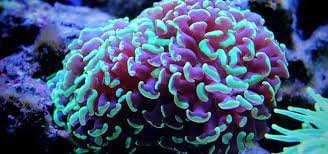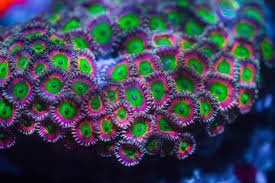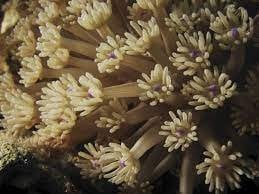Kalk is a good way to go BUT not when you are just starting out. Kalk has a learning curve.
Navigation
Install the app
How to install the app on iOS
Follow along with the video below to see how to install our site as a web app on your home screen.
Note: This feature may not be available in some browsers.
More options
You are using an out of date browser. It may not display this or other websites correctly.
You should upgrade or use an alternative browser.
You should upgrade or use an alternative browser.
Tips for a coral beginner(what am I doing wrong)
- Thread starter smalltownuser
- Start date
- Tagged users None
2x2x4 isnt 75g its 120g. 38 salinity is high looking for max 36 most go by sg not ppt but some do. Ie 1.025sg or 1.023 or whatever 1.026 and 36ppt are about the same and like I said the highest it should be.
still need to know what the Ph is. that could be way off. better to know then not.
you absolutely do not need to know what your ph is at... I have never tested ph. Yes tanks can benefit from higher ph, but unless you are running your tank in a furnace room I doubt ph is a problem. Especially for a beginner, there are much bigger and easier problems to tackle than phstill need to know what the Ph is. that could be way off. better to know then not.
I disagree with that. Ph Is the acidity of the water. While chasing Ph is not a fun thing to do, to high or to low WILL affect corals in a bad way. Ph and also be an easy fix.you absolutely do not need to know what your ph is at... I have never tested ph. Yes tanks can benefit from higher ph, but unless you are running your tank in a furnace room I doubt ph is a problem. Especially for a beginner, there are much bigger and easier problems to tackle than ph
Anyway, let's not have this here. Let help this person get his tank fixed up.
What corals? Tank is relatively new, it seems. Anemones like BTAs can have a very hard time in new tanks. What sand and rocks were used (also very important)?
Nitrates and phosphates shouldn't be zero. If it is being gobbled up by other stuff like algae or (best case) a mature tank full of coral, then that is different, but if it's absent, that is a recipe for dinoflagellates to start taking over.
Lots of good advice to be had on this forum, but you need to give ALL the details!
Nitrates and phosphates shouldn't be zero. If it is being gobbled up by other stuff like algae or (best case) a mature tank full of coral, then that is different, but if it's absent, that is a recipe for dinoflagellates to start taking over.
Lots of good advice to be had on this forum, but you need to give ALL the details!
My concern with lowering the salinity, is that I used to have it at 35 and had some fish issues and a lot of people in this forum said 35 is too low and I was recommended to increase it to 38-40. 40 seemed high so I aim right at 38. It is in a VERY well ventalated room. My house is 2600sqft, in the shape of an "H" and it is right in the center of that H, so it has huge rooms all around it with doors constantly being open, and people rarely sitting in that area. Its more of just a walk-through area. Surface aggistation is great. I have a power head on both sides of the tank aimed at the surface, plus my tidal 110 filter on max, causes a lot of surface aggitation. I actually think I have too much because I get salt all over the filter from the water movement.Yes. You do want some nitrate, and you definitely want some phosphates. I will recommend 0.1 as a target for phosphate, as this is what I personally have found to be best.
A great way to increase pH is kalkwasser, but you need to know where your alkalinity and calcium are...
You can also increase surface agitation and crack a window. You'd be amazed at how much CO2 can be generated by people in a home.
38 ppt is definitely on the higher end of salinities, I recommend 35 ppt.
Stabilizing alkalinity and calcium is a great, proven method to get better results. Using kalkwasser to do so is a solid, and very affordable approach. Then, once you exceed your evaporation, consider two part.
I think 15% on AB setting is pretty low tbh... I ran much higher than that on my 75 gallon (same dimensions as yours). Heck, my frag tank runs at 30% and that is 10" of water... I would increase slightly and observe how they respond.
I can definiely increase the intensity then, I lowered it when the coral's werent improving. I had them at 45% as was recommended, so I turned them down to 18%ish I believe.
Just to clarify, are you saying to figure out my alkalinity and calcium BEFORE I worry about PH?
I have honestly forgotten. They were recommended as the best beginner corals. I know I have a zoa, because those are very identifiable, but the other two Im not sure. They are soft thoughWhat type of corals do you have?
its all connected. But Yes I agree that alk and calc are much more important then ph. Not that ph isnt important.My concern with lowering the salinity, is that I used to have it at 35 and had some fish issues and a lot of people in this forum said 35 is too low and I was recommended to increase it to 38-40. 40 seemed high so I aim right at 38. It is in a VERY well ventalated room. My house is 2600sqft, in the shape of an "H" and it is right in the center of that H, so it has huge rooms all around it with doors constantly being open, and people rarely sitting in that area. Its more of just a walk-through area. Surface aggistation is great. I have a power head on both sides of the tank aimed at the surface, plus my tidal 110 filter on max, causes a lot of surface aggitation. I actually think I have too much because I get salt all over the filter from the water movement.
I can definiely increase the intensity then, I lowered it when the coral's werent improving. I had them at 45% as was recommended, so I turned them down to 18%ish I believe.
Just to clarify, are you saying to figure out my alkalinity and calcium BEFORE I worry about PH?
Tank is about 9 months old, I bought tropic marin live sand, and live rock from my LFS. Those were both in the tank when I cycled it. The rock was actually dry rock but they sold it as live rock. It was in water, but it didnt have bacteria on it so I had to make it live rock. I dont have much algae in my tank. I have a blenny and a tang that keep the algae pretty low. The only real problem I have with that is on the glass. The dang glass gets green in about a day and a half. I wipe it off though.What corals? Tank is relatively new, it seems. Anemones like BTAs can have a very hard time in new tanks. What sand and rocks were used (also very important)?
Nitrates and phosphates shouldn't be zero. If it is being gobbled up by other stuff like algae or (best case) a mature tank full of coral, then that is different, but if it's absent, that is a recipe for dinoflagellates to start taking over.
Lots of good advice to be had on this forum, but you need to give ALL the details!
So what do you recommend then?Kalk is a good way to go BUT not when you are just starting out. Kalk has a learning curve.
someone here told you 38-40?!! Thats way to high, fish are good in 30-36. Corals like it 34-36.My concern with lowering the salinity, is that I used to have it at 35 and had some fish issues and a lot of people in this forum said 35 is too low and I was recommended to increase it to 38-40. 40 seemed high so I aim right at 38. It is in a VERY well ventalated room. My house is 2600sqft, in the shape of an "H" and it is right in the center of that H, so it has huge rooms all around it with doors constantly being open, and people rarely sitting in that area. Its more of just a walk-through area. Surface aggistation is great. I have a power head on both sides of the tank aimed at the surface, plus my tidal 110 filter on max, causes a lot of surface aggitation. I actually think I have too much because I get salt all over the filter from the water movement.
I can definiely increase the intensity then, I lowered it when the coral's werent improving. I had them at 45% as was recommended, so I turned them down to 18%ish I believe.
Just to clarify, are you saying to figure out my alkalinity and calcium BEFORE I worry about PH?
like your coral guy said I wouldnt dose anything until you know what your parameters are that will be changed. alk, calc, mag, ph.So what do you recommend then?
Well ****...... Ok thank you for telling me. I will be doing a water change this evening lol. Clean that salt outsomeone here told you 38-40?!! Thats way to high, fish are good in 30-36. Corals like it 34-36.
If it was dry rock that they got wet for a little while, then it certainly isn't live rock, and hope you didn't pay extra for it. If they had it running in their system for months, then yes, it's coming with a complete microbiome.Tank is about 9 months old, I bought tropic marin live sand, and live rock from my LFS. Those were both in the tank when I cycled it. The rock was actually dry rock but they sold it as live rock. It was in water, but it didnt have bacteria on it so I had to make it live rock. I dont have much algae in my tank. I have a blenny and a tang that keep the algae pretty low. The only real problem I have with that is on the glass. The dang glass gets green in about a day and a half. I wipe it off though.
I would bring down your salinity to 35ppt slowly over the course of a few days. You already have fish and some coral, so best not to shock the system. Wait on the anemones like BTAs, LTAs, etc. until your tank is really stable, which means testing your water parameters regularly. RFAs are fair game, though. They seem to be the most tolerant nems. Soft corals won't consume as much ALK/Ca/Mg, but you'll still want to keep tabs on those three parameters, especially ALK. You'll even want to test your new saltwater to make sure it is mixing at the right ALK/Ca/Mg--occasionally a batch will be completely off!
I am using Red Sea Fish Pharm Coral Pro salt. The price is a little higher, however it has thousand and thousand of reviews saying its worth the cost for the coral benefits. They also say they have never had a bad batch. Im only on my second bucket of it, so I dont have enough experience on it if those claims are true.If it was dry rock that they got wet for a little while, then it certainly isn't live rock, and hope you didn't pay extra for it. If they had it running in their system for months, then yes, it's coming with a complete microbiome.
I would bring down your salinity to 35ppt slowly over the course of a few days. You already have fish and some coral, so best not to shock the system. Wait on the anemones like BTAs, LTAs, etc. until your tank is really stable, which means testing your water parameters regularly. RFAs are fair game, though. They seem to be the most tolerant nems. Soft corals won't consume as much ALK/Ca/Mg, but you'll still want to keep tabs on those three parameters, especially ALK. You'll even want to test your new saltwater to make sure it is mixing at the right ALK/Ca/Mg--occasionally a batch will be completely off!
I agree. From what you said, your corals (three?) sound like all soft corals, to don‘t worry about dosing.like your coral guy said I wouldnt dose anything until you know what your parameters are that will be changed. alk, calc, mag, ph.
do worry about your salinity. Start to slowly lower it until you get to 35. You can do this with fresh RODI water. If you get the chance, please take pictures of your corals under white lights And post them to this thread. This will help to confirm the coral types.
White light will be tough, the schedule is while Im at work, so I get home to white gone, and soft blue lights being on. These are google images of the types of coral I have. They arent these colors, but theyre these type of coralI agree. From what you said, your corals (three?) sound like all soft corals, to don‘t worry about dosing.
do worry about your salinity. Start to slowly lower it until you get to 35. You can do this with fresh RODI water. If you get the chance, please take pictures of your corals under white lights And post them to this thread. This will help to confirm the coral types.
Attachments
Similar threads
- Replies
- 5
- Views
- 110
- Replies
- 14
- Views
- 223
- Replies
- 2
- Views
- 115
- Replies
- 2
- Views
- 96






















